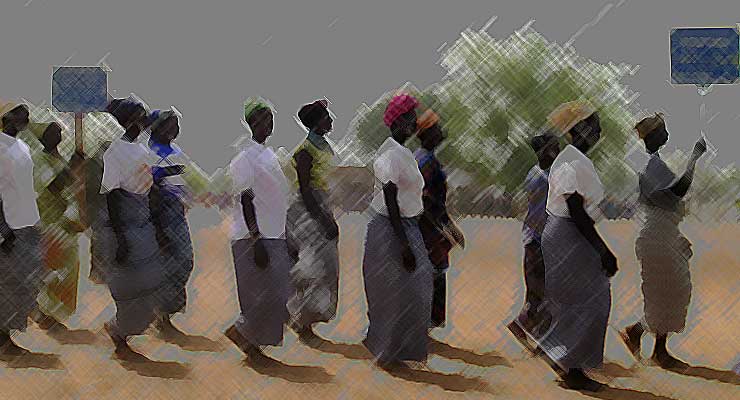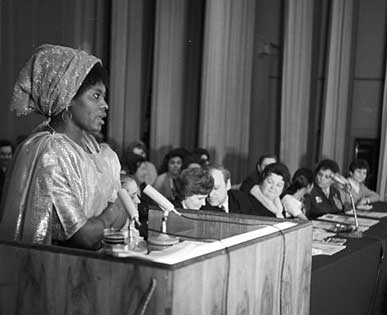
See part one of this two part series here.
The last two weeks have been a rollercoaster as women issues hogging the headlines around the world. This is the second and final part of the two part series celebrating International Women’s Day held on 08 March. The theme of this year’s festivities was “Be bold for change”. As alluded to in my previous article, the theme goes beyond correcting injustices against women as result of violence, harassment at workplaces and celebrating the women who have left a distinctive footprint that will inspire others. It also entails the fogging ahead with the struggle for meaningful political participation which is far from secure worldwide.

The fight for maximum political emancipation should not be sugar coated around a quota system as used in over 30 countries worldwide. In Zimbabwe for example, 30 percent of parliamentary seats are being given to women without a direct mandate from the people.
While the quota system represents progress towards the solution, it is not a panacea to women political participation. Yet, achieving a gender balance in political participation and decision making can be achieved as internationally agreed at the Beijing Declaration and Platform for action. According to UN Women (2017) worldwide there are 4 parliaments with no women.
Women can take advantage of quota systems as a stepping stone towards the solution for instance through fostering better relations with the electorate through various platforms. With time, more and more women should be able to compete for political office against men and be able to win.
There are two narratives competing for attention with regards to maximum women’s political participation. These have for a long time been the missing part of the puzzle.
The first narrative was rightly put forward through a 2012 study by the International Foundation for Electoral Systems (IFES) Global Summary of Women’s Organization conducted in 29 countries across the world, where women were surveyed. The conclusions centered on the following:
- Women’s development and progress being held back by the forces where “cultural beliefs/social attitudes/patriarchal mentality” is the number one obstructing advancement in women political participation.
- Physical violence against women at home and public places hinders women political participation.
- The centralized nature of political structures that favors men and the role that men take in most decision making processes limit women’s participation in governance issues.
The second narrative acknowledges the role of women being their own worst enemy. Overcoming attitudes associated with patriarchy and violence against women begins with the women themselves taking leading role and being confident in supporting female candidates during an election. With the world population having more women than men, it should be clear that with the right political environment, women should gain more public elections for government and parliament. This change should be supported by men to build peaceful societies free from masculinity induced attitudes and violence against women.
Africa is full of examples that can make women believe in endless possibilities. In West Africa, Ellen Johnson-Sirleaf became the first woman president in Africa in 2005, followed by Joyce Banda who took over as president of Malawi in 2012 for a short stint after the death in office of an elected president, Bingu wa Mutharika. Catherine Samba-Panza was the interim president of the Central African Republic from 2014-2016. In 2015, Mauritius had its first elected female president, Ameenah Gurib-Fakim, who was elected through a parliamentary vote.

According to UN Women (2017), as of January 2017, ten women were serving as Head of State and nine as Head of Government worldwide. There have been nine female prime ministers in Africa since 1993, including Luisa Diongo in Mozambique, who led for six years. Since 1975 there have been 12 female vice-presidents like Joyce Mujuru of Zimbabwe (sacked from the position in 2014 by President Robert Mugabe).
Vice-President Dr. Wandira Specioza Kazibwe served Uganda from 1994-2003. In Zambia there is Inonge Wina who became the country’s first female Vice-President in 2015. In South Africa Deputy president Phumzile Mlambo-Ngcuka defied the odds and served from 2005-2008 whilst Baleka Mbete served from 2008-2009 under former president Thambo Mbeki. Vice-president Alice Nzomukunda, served as Burundi’s Vice-President from 2005-2006 whilst Marina Barampama, served as Burundi Vice-President between 2006-2007. At present there a number of female vice-presidents in Africa.
According to Inter-Parliamentary Union (2017), as of 01 January 2017 there were only 53 women presiding over one of the Houses of the 193 Parliaments worldwide, 77 of which are bicameral. Women therefore occupy only 19.1 percent of the total number of 278 posts of Presiding Officers of Parliament or of one of its Houses. There are one fifth female speakers of house in either one house or both in African parliaments.
Women are also taking over key ministerial positions in defense, finance and foreign affairs which were a preserve for men a decade or two ago. Today South Africa has women defense minister, Nosiviwe Mapisa Nqakula, while another woman Ngozi Okonjo-Iweala serves as Nigeria’s finance minister.
Women are similarly visible in regional bodies, holding 50 percent of the African Union parliamentary seats. Gertrude Mongella served as the first president of the Pan African Parliament and in July 2012-March 2017, South Africa’s Nkosazana-Zuma took over the leadership of the African Union Commission after having served as South Africa’s health minister during the late President Nelson Mandela era and International Cooperation (foreign affairs minister) for current President Jacob Zuma’s government.
Recently, the ruling South Africa’s African National Congress (ANC) resolved to make her their preferred Presidential candidate for the party for the much anticipated ANC elective congress due later this year (note that if she wins this post she eventually qualify to become Head of State after 2019 general elections through parliamentary vote).
These patterns are also evident in the judiciary where for example in Zimbabwe Justice Rita Makarau became first female judge president in 2005 before being elevated to the supreme court and constitutional court in 2010. Zambia’s Chief Justice Irene Chirwa Mambilima is a women, another evidence of success based on commitment and hard work. With Fatou Bensouda of Gambia holding to the post of chief prosecutor at the International Criminal Court (ICC), the sky is absolutely not the limit. Five judges ICC are African women.
On another note, Zimbabwe like other progressive nations can continue to reserve positions for women in government in accordance with the SADC 50 percent quota system at independent commissions such as the Zimbabwe Anti-Corruption Commission. Zimbabwe’s Constitution in section 320 (4) states that the commission’s chairperson and deputy must be of different sex.
This is the time for women to continue to “be for change” that they want.
Leave a Reply